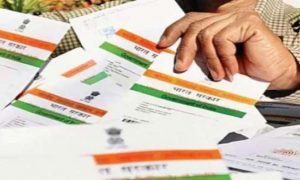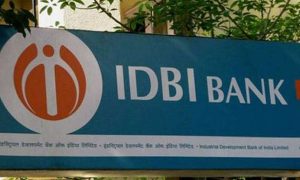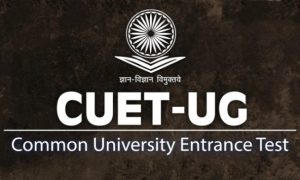Education loans are fueling the dreams of economic class students in a number of ways. Here is a breakdown of how student loan trends are evolving, a comparison of loans for studying abroad versus in India, and some specific data on the Indian education loan market:
- Increased demand: The demand for education loans has been growing steadily in India, driven by a number of factors, including the rising cost of education, the increasing number of students enrolling in higher education, and the growing awareness of the benefits of education loans.
- Growing role of NBFCs: Non-Banking Financial Companies (NBFCs) have been playing an increasingly important role in the education loan market in India. NBFCs offer more flexible terms and conditions than banks, and they are often willing to lend to students with lower credit scores.
- Decreasing share of PSU banks: Public Sector Banks (PSU banks) have traditionally been the main providers of education loans in India. However, their share of the market has been declining in recent years, as NBFCs have become more competitive.
- Lower interest rates: The interest rates on education loans have been declining in recent years. This is due to a number of factors, including the falling repo rate and the increasing competition in the education loan market.
- Flexible repayment options: Lenders are now offering more flexible repayment options for education loans. This includes the option to defer payments for a certain period of time, the option to repay the loan in installments, and the option to refinance the loan. Education loans typically have flexible repayment terms that can be tailored to the borrower’s individual circumstances. This can make it easier for students from low-income families to afford their monthly payments.
- They make it possible for students from low-income families to pursue higher education. Without an education loan, many students from low-income families would not be able to afford the cost of college. Education loans can help these students achieve their dreams of getting a college degree and improving their chances of getting a good job.
- They provide access to high-quality education. Education loans can help students attend high-quality colleges and universities that they might not be able to afford otherwise. This can give students from low-income families the opportunity to get a world-class education that will help them succeed in their careers.
- They offer forgiveness programs. There are a number of forgiveness programs available for borrowers who work in public service jobs. These programs can help borrowers from low-income families pay off their student loans faster or even for free.
Read More: Post Office FD vs Bank FD: Which is a better investment option?
Here is a comparison of education loans for study abroad vs study in India, specially new dynamics of student interest and Private players offering:
Study Abroad:
- Loan amount: The maximum loan amount for study abroad is typically higher than for study in India. This is because the cost of studying abroad is generally higher.
- Interest rates: The interest rates on education loans for study abroad are typically higher than for study in India. This is because the risk of default is considered to be higher for borrowers who are studying abroad.
- Repayment terms: The repayment terms for education loans for study abroad are typically longer than for study in India. This is because borrowers who study abroad may take longer to get a job that pays a high enough salary to afford their monthly payments.
- Security: Lenders may require borrowers who take out education loans for study abroad to provide collateral, such as a house or car. This is because the risk of default is considered to be higher for these borrowers.
- New dynamics: In recent years, there has been a growing interest in studying abroad, especially among Indian students. This is due to a number of factors, including the increasing globalisation of the economy and the desire of Indian students to experience different cultures. As a result, there has been an increase in the number of private players offering education loans for study abroad. These players are often able to offer more competitive interest rates and repayment terms than traditional banks.
Read More: Sukanya Samriddhi Yojana: Invest in this govt scheme to gain up to Rs 67 lakh
Study in India:
- Loan amount: The maximum loan amount for study in India is typically lower than for study abroad. This is because the cost of studying in India is generally lower.
- Interest rates: The interest rates on education loans for study in India are typically lower than for study abroad. This is because the risk of default is considered to be lower for borrowers who are studying in India.
- Repayment terms: The repayment terms for education loans for study in India are typically shorter than for study abroad. This is because borrowers who study in India may get a job that pays a high enough salary to afford their monthly payments sooner.
- Security: Lenders may not require borrowers who take out education loans for study in India to provide collateral. This is because the risk of default is considered to be lower for these borrowers.
- New dynamics: In recent years, there has been a growing interest in studying in India, especially among international students. This is due to a number of factors, including the increasing affordability of Indian education and the desire of international students to experience Indian culture. As a result, there has been an increase in the number of private players offering education loans for study in India. These players are often able to offer more competitive interest rates and repayment terms than traditional banks.
Read More: Retirement Planning: How to choose the right retirement and pension plans
Ultimately, the best education loan for you will depend on your individual circumstances and needs. It is important to compare different lenders and loan terms before making a decision. Here are some specific data points on the education loan market in India over the last three years:
- The outstanding balance of education loans in India grew from Rs. 60,000 crore in 2019-20 to Rs. 96,000 crore in 2022-23.
- The share of NBFCs in the education loan market grew from 20% in 2019-20 to 30% in 2022-23.
- The share of PSU banks in the education loan market declined from 80% in 2019-20 to 70% in 2022-23.
- The average interest rate on education loans declined from 10% in 2019-20 to 8% in 2022-23.
- The number of education loan borrowers in India grew from 5 million in 2019-20 to 7 million in 2022-23.
The education loan market in India is expected to continue to grow in the coming years. This is due to the factors mentioned above, as well as the increasing number of students enrolling in higher education.





































